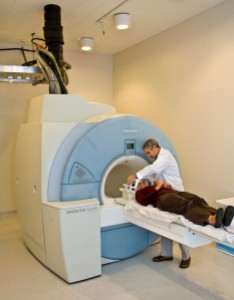 The immune system is like an army, poised and ready to attack: it actually comprises two separate systems, these being the innate and the adaptive immune systems – you could think of these as two separate groups of soldiers i.e. foot soldiers and intelligence officers. The innate immune system responds quickly to threats, it is always on guard but this system is non-specific, meaning that it does not recognise any specific threats and will respond to all threats in the same way – this system could be thought of as the bodies foot soldiers (recognising all types of enemy but always launching the same type of attack). The adaptive immune system is slower since it needs time to recognise the threat but, once this is done, this system can launch a more specific, targeted, attack. This system also has a memory, meaning that after successive encounters with the same threat it will adapt and the next time it encounters the same threat its attack will be faster and more efficient. It is during this type of attack that antibodies are produced. These antibodies stick around in the body and help bolster our immune system and speed up future attacks (it is this process which is augmented through immunisation/vaccination). We could think of this system as the body’s intelligence agency, gathering information on its enemy and launching a targeted attack.
The immune system is like an army, poised and ready to attack: it actually comprises two separate systems, these being the innate and the adaptive immune systems – you could think of these as two separate groups of soldiers i.e. foot soldiers and intelligence officers. The innate immune system responds quickly to threats, it is always on guard but this system is non-specific, meaning that it does not recognise any specific threats and will respond to all threats in the same way – this system could be thought of as the bodies foot soldiers (recognising all types of enemy but always launching the same type of attack). The adaptive immune system is slower since it needs time to recognise the threat but, once this is done, this system can launch a more specific, targeted, attack. This system also has a memory, meaning that after successive encounters with the same threat it will adapt and the next time it encounters the same threat its attack will be faster and more efficient. It is during this type of attack that antibodies are produced. These antibodies stick around in the body and help bolster our immune system and speed up future attacks (it is this process which is augmented through immunisation/vaccination). We could think of this system as the body’s intelligence agency, gathering information on its enemy and launching a targeted attack.
When we receive a vaccine we are attempting to induce an immune response without harming the body. The body is infected by a harmless version of a virus or bacteria that triggers an immune response without making the recipient sick. This then creates an immunological memory so that the next time we are infected by the same pathogen the immune system will be quick to react and the threat will be neutralised before we show any symptoms.
Vaccines have been a major success, they have helped to eliminate most of the childhood diseases that historically caused millions of deaths and are very cost effective. Thanks to this, average life expectancy has increased from 35 years in 1750 to above 80 years today. According to World Health Organization measles vaccination resulted in a 79% drop in measles deaths between 2000 and 2014 worldwide, and according to UNICEF each year immunisation prevents around 2-3 million deaths a year from life-threatening diseases in children.
But some people still choose not immunise their children, stating a range of reasons – from religion to the belief that vaccines are neither effective nor safe. In 1998 the Lancet published a paper by Andrew Wakefield stating that the measles vaccine produced autism in 21 children. Later several peer-reviewed studies failed to show any association between the vaccine and autism and eventually the Lancet’s editors fully retracted Wakefield’s paper claiming deliberate falsification. But, despite a lack of solid evidence and the paper retraction, vaccination rates in the UK dropped to 80% in the years following, leading to an increase in cases of measles across the UK – causing not only deaths but also measles encephalitis. By 2008, measles had become endemic in the UK due to low-vaccinated communities.
Last year there was a case of diphtheria in Spain when a 6-year-old non-immunised boy became infected. Diphtheria is a highly contagious disease caused by a bacterium called Corynebacterium diphtheria. Thanks to immunisation campaigns in Spain the number of cases of diphtheria in the country dropped from 1,000 cases in 100,000 inhabitants in 1945 to 0.10 cases in 100,000 in 1965 – now in 2016 diphtheria is thought to have been eradicated in this area. Therefore when this young boy fell ill last year there were no treatments available in the country at the time. Sadly, despite heroic efforts to import a treatment, the child died. When his parents were asked why he had not been immunised they said they felt tricked and not properly informed by anti-vaccination groups; they thought they were doing the best thing for their child.
So what happens when people decide not to immunise their children? :
Assuming that a large proportion of a population are immunised it is possible that non-immunised individuals may be protected by a process known as herd immunity. Basically, the more people who are immunised, the fewer opportunities a disease has to spread – this confers protection to those who can’t be immunised (such as children with cancer receiving chemotherapy or radiotherapy, children treated with immunosuppressed drugs such as corticosteroids, people with weakened immune system or people allergic to any of the components of the vaccine). This means that these people really depend on those around them being immunised.
We can lose sight of the benefits of immunisation because we don’t have a memory of living in a world without vaccines. But, diseases that we thought were eradicated a long time ago will come back if we stop immunisation – meaning we could find ourselves confronting epidemics of diseases with the ability to kill hundreds of thousands of children and adults every year. Sadly some diseases will never be fully eradicated because they are found everywhere. For example, tetanus is a serious infection caused by Clostridium tetani bacteria which produces a toxin that affects the brain and nervous system. Clostridium tetani spores can be found most commonly in soil, dust and manure, but also exist virtually anywhere. So a child playing in a sand pit or with just some grass can get in easily infected through a cut or wound on his hands. Therefore, maintaining immunisation is particularly important in the fight against this type of disease.
Although vaccines do come with some side effects, like high temperature or soreness in the injected site, very serious health events post-immunization are rare and the benefits of immunisation clearly exceed the risks of an infection. Thus, the only way to prevent the infection is through immunisation.
Post by: Cristina Ferreras
References:
Rappuoli R et al. Vaccines for the twenty-first century society. Nat Rev Immunol. 2011 Nov 4;11(12):865-72. doi: 10.1038/nri3085. Erratum in: Nat Rev Immunol. 2012 Mar;12(3):225
UNICEF_immunization Facts and Figures April 2013 http://www.unicef.org/immunization/file/UNICEF_Key_facts_and_figures_on_Immunization_April_2013%281%29.pdf
Save
Save

 Bioluminescence can occur in a broad range of organisms, from bacteria to fish (with the exception of higher vertebrates, e.g. reptiles and mammals), and is found across a variety of land and, more commonly, marine environments. In fact, around
Bioluminescence can occur in a broad range of organisms, from bacteria to fish (with the exception of higher vertebrates, e.g. reptiles and mammals), and is found across a variety of land and, more commonly, marine environments. In fact, around  In contrast to hiding from prey, as with the dragonfish, bioluminescence can also be used to attract prey. Deep in the Te Ana-au caves of New Zealand,
In contrast to hiding from prey, as with the dragonfish, bioluminescence can also be used to attract prey. Deep in the Te Ana-au caves of New Zealand, 



 This year the Manchester branch of the British Science Association launched it’s first ever science journalism competition. They presented AS and A-level students across Greater Manchester with the daunting task of interviewing an academic researcher then using this material to create an article accessible to someone with no scientific background. This was by no means a simple task, especially since many of the researchers were working on basic research – the type of work which may not be sensational but which represents the real ‘nuts and bolts’ of scientific research and without which no major breakthroughs would ever be made. Despite the challenges implicit in this task all our entrants stepped up and we were astounded by the quality of work submitted.
This year the Manchester branch of the British Science Association launched it’s first ever science journalism competition. They presented AS and A-level students across Greater Manchester with the daunting task of interviewing an academic researcher then using this material to create an article accessible to someone with no scientific background. This was by no means a simple task, especially since many of the researchers were working on basic research – the type of work which may not be sensational but which represents the real ‘nuts and bolts’ of scientific research and without which no major breakthroughs would ever be made. Despite the challenges implicit in this task all our entrants stepped up and we were astounded by the quality of work submitted. 





 Today, warfarin is the main blood thinner (anticoagulant) used in the treatment of blood clotting disorders, heart attacks and strokes. However, its story began on the prairies of North America and Canada during
Today, warfarin is the main blood thinner (anticoagulant) used in the treatment of blood clotting disorders, heart attacks and strokes. However, its story began on the prairies of North America and Canada during  No article on serendipity in drug discovery would be complete without at least mentioning the
No article on serendipity in drug discovery would be complete without at least mentioning the  However, while today the value of penicillin is well recognised, there was
However, while today the value of penicillin is well recognised, there was 
 While here in the city we think mostly of the effect the haze and land burning has on us but it’s not just people that are affected. Indonesia is one of the most bio-diverse countries on the planet, most famously home to Orangutans. Destruction of the forests doesn’t just pollute their air, it also destroys their homes. According to online sources, up to 5000 already endangered Orangutans are killed every year through the destruction of their habitat for palm oil productions
While here in the city we think mostly of the effect the haze and land burning has on us but it’s not just people that are affected. Indonesia is one of the most bio-diverse countries on the planet, most famously home to Orangutans. Destruction of the forests doesn’t just pollute their air, it also destroys their homes. According to online sources, up to 5000 already endangered Orangutans are killed every year through the destruction of their habitat for palm oil productions

You must be logged in to post a comment.